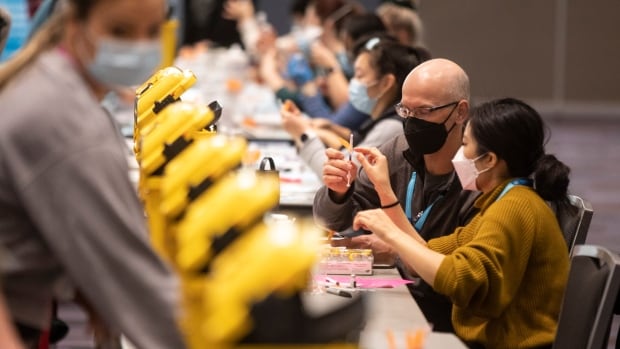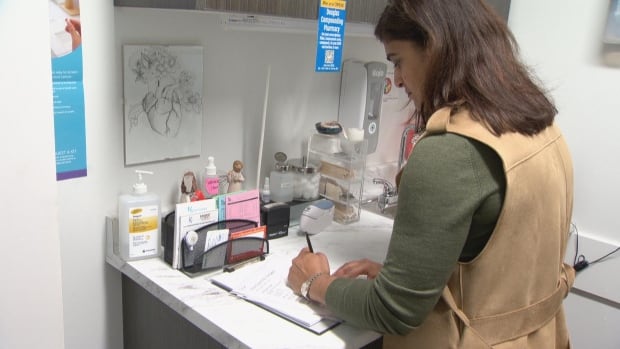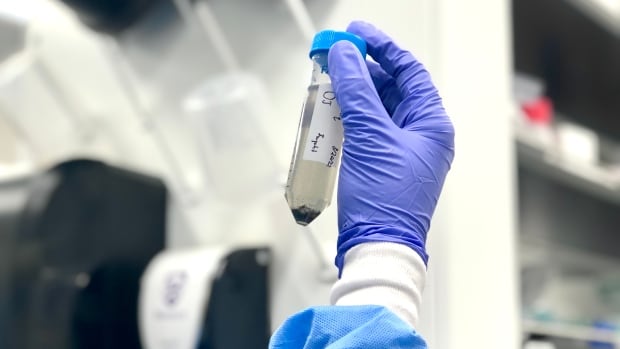This story is part of CBC Health’s Second Opinion, a weekly analysis of health and medical science news emailed to subscribers on Saturday mornings. If you haven’t subscribed yet, you can do that by clicking here.
While there’s no sign a dangerous form of bird flu has gained the ability to transmit between humans, the steady spread of the virus to new species of mammals — most recently, dairy cattle throughout the U.S. — suggests H5N1 is closer to us than ever before.
Officials are quick to note that without a few key evolutionary leaps, this pathogen won’t spark a human health crisis. Dr. Michael Ryan, executive director of the World Health Organization’s (WHO) health emergencies program, said as much during remarks on Wednesday.
“Nobody is suggesting that H5N1 is the new, next pandemic. I don’t believe anybody can predict that,” he said.
“But it’s certainly concerning when a virus like this begins to infect multiple mammalian species, which means the virus that is adapting to [animals] that are more like us than birds, and therefore there’s a higher level of alert.”
Given the risks, WHO officials say that behind-the-scenes processes are in place, including agreements with drugmakers, to produce “billions” of H5N1 vaccine doses within the first year of a pandemic, should this virus gain the ability to spread between humans.
Other scientists warn that’s easier said than done, given the complexities involved in manufacturing and distributing a new set of vaccines.
“Even though we have a massive global infrastructure capable of producing flu vaccines… we will never be ready for a pandemic,” McMaster University immunologist and vaccine researcher Matthew Miller said.
No stockpile in Canada
The spread of H5N1 throughout cattle herds across at least nine U.S. states is the latest curve ball from a virus that’s proven adept at latching onto new hosts, raising questions over whether the world is prepared for more surprises.
U.S. farm workers in multiple states may now be in regular contact with infected cattle, as officials are monitoring at least 260 people for symptoms — amid growing concerns that limited testing could be masking the true scale of the outbreak, both in cows and in humans. (On Friday, the U.S. federal government did announce major funding to expand testing efforts, which includes paying up to $75 to farm workers who take part in studies.)
Early research, which hasn’t yet been peer reviewed, also suggests the cells in cows’ mammary glands can be infected by both avian and human influenza viruses. Scientists warn that scenario may provide a viral mixing vessel, fuelling the development of adaptations that hike the risk to human hosts.
None of these signals are a smoking gun that H5N1 will evolve to sustain transmission in a human population. Yet the possibility is always present, even if the virus’s next moves remain somewhat unpredictable.

In response to questions from CBC News, WHO officials stressed that there are two H5N1 vaccine candidates already available that could be used in a pandemic scenario, along with options targeting other forms of avian influenza.
There’s no need to begin manufacturing these shots now, the WHO’s Ryan said. Scaling up to produce pandemic vaccines would also mean a trade-off where manufacturers are forced to hit pause on annual shots for other strains.
“You can’t just press the button and begin producing pandemic [H5N1] vaccines,” Ryan said. “You have to stop producing your seasonal vaccine, and all of you out there know how life-saving that vaccine is… so this requires very careful consideration.”
Some countries have H5N1 vaccines already on hand, including the U.S., which has two types of shots that are well matched with the currently circulating strain in dairy cattle. Both candidate vaccines are available to manufacturers, according to the U.S. Centers for Disease Control and Prevention (CDC).
The CDC is also testing human blood samples from people previously vaccinated with H5N1-based vaccines to see how it reacts to virus samples taken from the recent human case in Texas. So far, their research suggests vaccination “will offer good cross-protection against cattle outbreak viruses.”
Here in Canada — where no cases have been reported yet in dairy cattle — federal officials say they’re not acquiring a fixed stockpile of shots, since any changes in the virus that would allow it to transmit between humans could “fundamentally influence the antigen required for a human vaccine.”
Currently, there are two H5N1 vaccines authorized in Canada, based on strains from previous outbreaks. The Public Health Agency of Canada (PHAC) also has agreements with several vaccine manufacturers, both domestic and international, the agency noted in a statement.
A GlaskoSmithKline facility in Quebec, for instance, produces seasonal flu shots each year, and one of its subsidiaries also developed one of the country’s two authorized H5N1 shots. That vaccine is approved for use in children six months of age and older, and no special safety concerns were identified in clinical studies, according to Health Canada’s regulatory decision on its use.
“Under these contracts, the vaccine production process would be triggered by a WHO pandemic influenza declaration or a decision by the Government of Canada that influenza vaccine manufacturers switch from seasonal to pandemic influenza vaccine production,” PHAC’s statement continued.
Lessons from COVID-19
While those preparations paint a rosy picture of countries’ ability to rapidly respond, Miller, from McMaster, stresses that the process — from testing to manufacturing to shipping — is complex and lengthy, even in a best-case scenario.
He pointed to the COVID-19 pandemic, during which drugmakers raced to develop brand-new vaccines for a never-before-seen threat. The pace of those trials was astounding; shots began rolling out in some countries as early as December 2020.

Yet, a year later, infections and deaths soared to new heights thanks to the highly contagious Omicron variant, even as vaccination campaigns kept rolling out through the population.
It wasn’t because the shots weren’t effective, Miller added, “but because the virus evolves, and that causes problems.”
The explosive spread of H5N1 among dairy cattle in mere months also points to how fast this kind of situation can change. Miller agrees that while it’s a simple switch to start producing pandemic-based vaccines, manufacturing and distributing eight billion global doses can’t possibly happen overnight.
And the challenges don’t stop there. Jillian Kohler, a professor at the University of Toronto whose research focuses on global access to essential medicines, says nationalism and rampant misinformation would surely complicate vaccination efforts in the event of another pandemic.
“There are a lot of variables that could easily derail getting vaccines out. And it’s not just getting vaccines out, it’s getting people to accept the vaccines.”
Vaccine equity, she says, also remains a major issue. During the COVID pandemic, wealthier countries — Canada included — had an oversupply of vaccines, while others went without. And in 2022, when mpox spread worldwide for the first time, vaccines rolled out in many higher-income countries, yet the hardest-hit regions of Africa didn’t have any shots.
Without learning lessons from those prior crises, Kohler warned much of the world could be sidelined during vaccination campaigns if H5N1 ever makes its human-to-human leap.
She also questioned the role of private industry in preventing pandemics, including decisions over which shots and customers to prioritize at any given time.
“Why are we relying on drugmakers to make the policy decisions that should be in the hands of government?” Kohler asked.
“To put trust in the industry to make sure we get the vaccines out in a timely fashion is repeating a mistake that we had before.”







